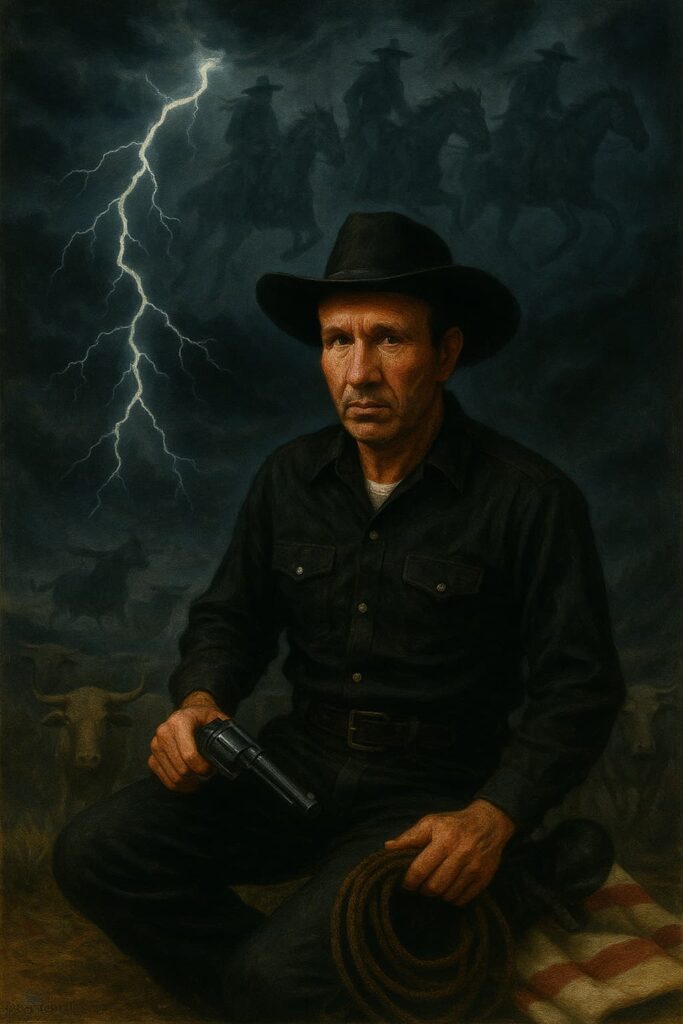
A Haunting Melody of Eternal Pursuit and Redemption
Ah, “Ghost Riders in the Sky.” Just the title itself conjures images, doesn’t it? For those of us who grew up with the golden age of Westerns and the evocative power of a well-told story in song, this isn’t just a tune; it’s a foundational piece of the American musical tapestry. And when we speak of its definitive renditions, the resonant baritone of Marty Robbins certainly springs to mind. While the song itself predates his chart-topping days, Marty Robbins brought his unique vocal artistry to this classic, embedding it further into the collective consciousness. His version, released on his 1979 album “All-Time Favorite Country Songs,” wasn’t a standalone single that climbed the hot 100 on its own at that particular moment in his career, but rather a beloved track from an album that celebrated enduring country and western classics. It’s important to remember that by the late 70s, Marty Robbins was already a legend, his career spanning decades, and his albums were cherished collections for his devoted fanbase, often selling consistently without needing the immediate buzz of a new single on the pop charts. His rendition of “Ghost Riders” was a testament to his enduring respect for the genre’s heritage.
But let’s peel back the layers of time a little further, shall we? The true genesis of “Ghost Riders in the Sky” goes back to Stan Jones, a park ranger and songwriter who penned this haunting ballad in 1948. The story behind it is as captivating as the song itself. Jones claimed he was inspired by an old cowboy legend he heard as a young man, a chilling tale of spectral cowboys forever chasing a phantom herd across the sky. Imagine, if you will, a lonely night out on the range, the stars like diamonds scattered across an inky black canvas, and the wind whispering secrets through the sagebrush. It’s in such moments that the imagination takes flight, giving birth to myths and legends that resonate deep within the human spirit. Jones masterfully wove this folklore into a narrative of judgment and redemption, creating a powerful allegory that speaks to our deepest fears and hopes.
The song’s core meaning is a profound warning: a spectral vision of a damned cowboy, forever condemned to ride the endless range with a phantom herd, their “hooves a-clattering” and “voices crying.” It’s a stark reminder that we reap what we sow. The moral of the tale, delivered by one of the “riders” in the song, is clear: change your ways, cowboy, or face an eternity of the same hopeless pursuit. It’s a timeless message, wrapped in the evocative imagery of the Wild West. For many of us, it stirred a sense of awe and a quiet contemplation of our own choices, even as children listening to it on the radio or on our parents’ records. It’s a spiritual journey masked as a cowboy tale, a lament for lost souls and a desperate plea for salvation.
The initial success of “Ghost Riders in the Sky” was truly remarkable, with several artists scoring hits with it in 1949, most notably Vaughn Monroe and Burl Ives, both reaching the top of the charts. This speaks to the immediate and widespread appeal of Jones’s composition. It wasn’t just a catchy tune; it was a narrative that struck a chord, tapping into universal themes of morality, consequence, and the enduring power of the human spirit to seek redemption. Over the decades, countless artists have covered it, from country icons to rock legends, each adding their own unique flavor to its enduring melody and message. Yet, for many of us, Marty Robbins’ rendition holds a special place. His delivery wasn’t about flash or elaborate production; it was about the raw power of his voice, the sincerity of his interpretation, and his ability to transport you directly into the heart of the story. He understood the soul of a cowboy, the vastness of the prairie, and the weight of a spiritual struggle. When he sang it, you could almost feel the phantom wind on your face and hear the distant thunder of those spectral hooves. It’s a performance that doesn’t just entertain; it resonates, it lingers, and it invites you to reflect on your own journey under the vast, mysterious sky. A true classic, handled by a true master.